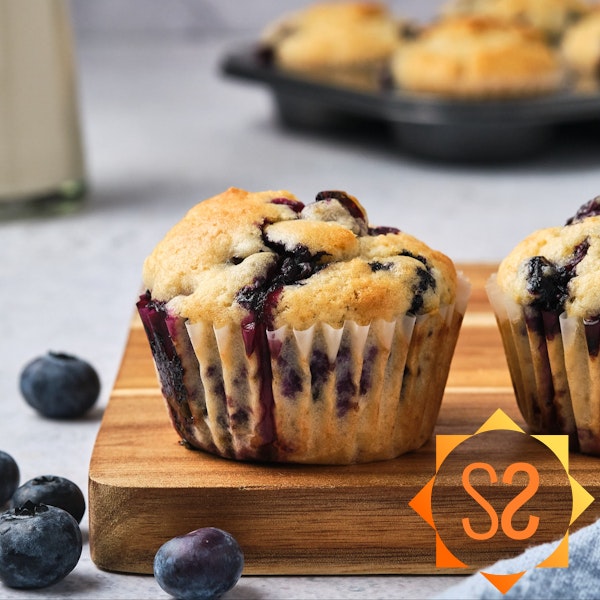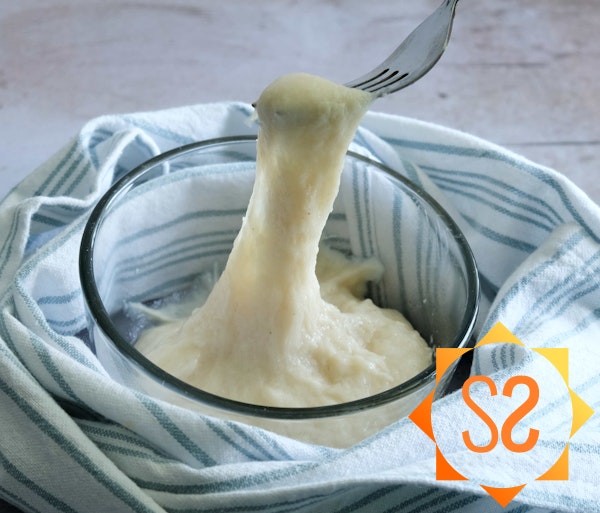Vegan Life | Health
All Vegan Protein is NOT the Same! (Why Variety is Important in a Vegan Diet)
July 17, 2020
Everyone talks about how much protein vegans are getting.... but I rarely hear anyone discussing what kind of proteins vegans should be eating. And no, not all protein is the same!
What is a protein?
Yes, protein is used to build muscle. But our body uses proteins for so much more than that. For example, our bodies produce the protein keratin for our hair, skin, and nails. Our skin also uses the proteins collagen and elastin, which you may know are responsible for giving our skin its elasticity and fullness.
Proteins are also used in our organs and bones. They help us see, they produce hormones, and assist with replicating our DNA. Antibodies are a type of protein—these proteins are critical for our immune response to outside invaders that shouldn't be in our bodies, like viruses and bacteria.
The building block of a protein is an amino acid, just like the building block of a word is a letter. There are a total of 20 different amino acids that we need to build proteins. When amino acids are chained together in a specific sequence, they can create all of these different proteins that our bodies need.
How does our body use the proteins we eat?
When we get protein from food, it's in the form of the protein that that plant or animal produced for its body. Human bodies can't use the proteins in those forms. So our digestive system takes those proteins and breaks them back down into their building blocks—amino acids.

Now the body is ready to send those amino acids to the liver, and reassemble them into proteins that are used for your skin, hair, nails, bones, organs, blood, vision, immune system, hormones, etc.
Our DNA stores all of the information that's needed to build every protein our bodies require. Each of these proteins requires a certain amount of each specific amino acid, just like following a recipe. That's why we can't just focus on getting enough “protein,” we also need to pay attention to the amounts of each amino acid that we're getting.
Let's say you want to bake a cake. If you tell your significant other you need “ingredients” and he brings you back tomatoes and milk, well... you have ingredients but not the right ingredients. That's what happens when we just eat “protein.” We have to be more specific than that, particularly as vegans. Because if we don't have enough of a specific amino acid, then our body can't produce enough of the proteins that require that amino acid.
At this point, you may be wondering why does this affect vegans more than meat and dairy eaters? Good question.
Essential and nonessential amino acids
Our bodies can independently produce 11 of the 20 amino acids that we need, without eating them. At one point, humans could produce all 20 amino acids, however, as certain amino acids became plentiful and reliable in our food sources, our bodies stopped producing them and eventually lost the ability to do so entirely. It's believed that, through natural selection, we lost the ability because not producing these amino acids freed up energy for our bodies to use for other things. The people who could no longer produce those amino acids may have been stronger, or had more endurance, or had some other advantage over those who were still producing the amino acids.
The nine essential amino acids are: histidine, isoleucine, leucine, lysine, methionine, phenylalanine, threonine, tryptophan, and valine.
Complete Protein Sources
When a food source contains moderate amounts of all 9 essential amino acids, we say it's a complete protein source. All animal sources of protein are complete protein sources. However, most vegan sources are not. So there's “protein” in plant sources, and yes, you do need to pay attention to how much of it you're eating in total. But as vegans, we also need to be aware of which amino acids we might be missing.
Quinoa, hemp seeds, chia seeds, soy, amaranth, buckwheat, spirulina, and nutritional yeast are all complete proteins. So adding those to your diet can be helpful. But it would be near impossible to get all or even most of our protein from these sources. So since the bulk of our protein sources will probably be incomplete proteins, we need to be aware of which amino acids might be low in our diets. Then we can eat foods that provide more of those specific amino acids.
When you're getting all or most of your protein from a single incomplete source, like beans, for example, you're going to be deficient in at least one of these amino acids. If you're only eating beans, you'd be deficient in methionine. So to fix that, you've got to eat more foods that contain methionine.... foods like rice, nuts, seeds. The traditional beans and rice that is common in Latin American households is actually a complete protein when it's eaten together.
Rice and beans might work well together, but you don't have to eat them at the same meal. You can consume your different amino acid sources at different times. However, you should get all the amino acids you need in a single day.
Balancing Your Vegan Proteins
The best thing we can do to prevent deficiency in any amino acid is to combine protein types. Vegan protein comes from 4 basic categories: vegetables, legumes (beans, lentils, peanuts), nuts/seeds, and grains. Each of these categories has its own deficiency in a particular amino acid. Vegetables and legumes tend to be low in methionine. So if you get a lot of your protein from vegetables and legumes, you should add more grains (bread, rice, pasta) or nuts and seeds into your diet. Grains are low in lysine and threonine, and nuts and seeds are low in lysine. So if you're getting most of your protein from those sources, you're going to want to add more protein from vegetables and legumes to your diet. If you do that, you should be good. But you can go further to make sure you're getting enough of each amino acid, if you want to.
The easiest thing to do is get a blood test to determine if you're deficient in any specific amino acid. Then you can look for foods that have high amounts of that deficient amino acid, and incorporate them into your diet. I found a great blog that lists 30 of the best food sources for a few different amino acids, so I'll link that at the end of this article.
If you can't or don't want to get a blood test, you can just track the foods you're eating each day for a week or so and see if you're getting enough of each amino acid. That can be really time-consuming, though. You can check the amount of each amino acid that you should be getting each day by Googling the amino acid name and RDA (recommended daily allowance). There's some variation on the exact RDA for each amino acid, depending on the source, but you should be able to get a general idea. It will usually tell you how many mg per kg of body weight, so if you weigh 60 kg, you'll multiply the number given by 60 to get the amount for you specifically.
There is an app I found called Cronometer, which will count up all the amino acids as you add foods into your diary. However, when I tried it out, I immediately noticed that some of the nutrition data was wrong, so while it may save some effort, that may not be the most accurate way to go about it.
I personally think the most efficient way to track your food is this: write down everything you eat and the amount, then go and check the protein content of each food. Then make two columns, one for vegetables and legumes, and another for grains and nuts and seeds. Find out how much protein came from each category, and if one is noticeably lower than the other, then try to eat more foods from the other category going forward.

I tracked my food for breakfast and lunch today, and you can see if you add it up, I have only 7 grams of protein in the left column and 23 grams in the right column (although chia seeds are a complete protein, so I could split that 50/50 and get 8 grams on the left and 22 grams on the right). But either way, most of my protein is coming from grains, nuts, and seeds. I've eaten a lot of vegetables today, but vegetables generally don't have as much protein per serving as other food sources. So based on this, I'm going to want to make sure I have some beans or lentils at dinner to balance this out a little bit.
It might seem a little daunting now to have to pay close attention to what you're eating. But after you do this for a couple of weeks, you will be able to do most of the calculations in your head. Once you start making those small changes to the way you eat, getting a good balance of amino acids will become an automatic habit.
If you're finding it hard to make changes in your diet right away, protein supplements may help. You can check the amino acid profile on most protein supplements. I have one from Whole Foods that has plenty of lysine and a fair amount of threonine, but it's low on methionine. That's okay for me because I get plenty of protein from grains, nuts, and seeds, which have enough methionine on their own. But if you get most of your protein from beans, you should find a supplement with a higher methionine content.
At the end of the day, variety is the key to staying healthy as a vegan. As my grandfather used to constantly remind me, "Stephanie, everything in moderation!"
Share this:

















Leave a Comment
I love reading comments! I'll do my best to answer questions, too. If you made the recipe, please leave a star rating, it helps support the blog so I can make more recipes and articles. Thank you!
says